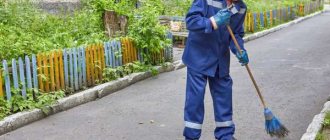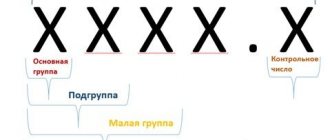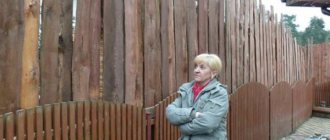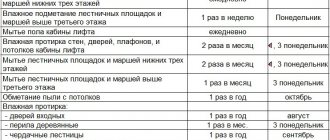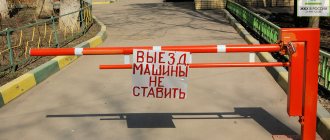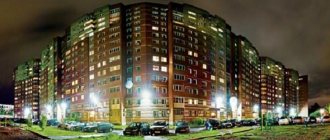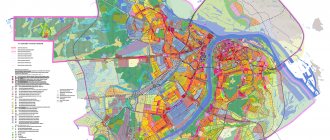What to do if the yard is not cleaned?
There are situations in which residents regularly pay their bills, but the requirements for cleaning the territory are not met to the required extent and quality.
In this case, residents must contact the Management Company with a request to reduce tariffs for cleaning services. If the management company does not respond to the residents’ statements, then they should file a complaint with one of the following authorities:
- housing inspection;
- consumer protection service;
- local inspection;
- Judicial authority.
In conclusion, it is worth adding that the quality of cleaning work in the area adjacent to an apartment building depends on the activity and participation of the residents themselves in this matter.
If they are not indifferent to the negligent attitude on the part of the service organization and show initiative at the right time, the area adjacent to the high-rise building will always be cleaned.
Cleaning of entrances by the management organization
Not all owners are satisfied with the quality of cleaning of the entrances to their home.
Cleaning with a wet broom is carried out every day.
Someone says that the entrance is cleaned only by the residents. Management organizations always have arguments for owner dissatisfaction: lack of funds, lack of employees. A situation like this should not arise. Today we will tell you who is responsible for cleaning the entrances of apartment buildings, what cleaning standards exist and how to calculate the cost of cleaning common areas.
10978Just a few years ago, the owners of the premises cleaned the entrances of apartment buildings themselves.
Some drew up a duty schedule, others hired contractors for cleaning. Everything changed with the adoption of . The document established a minimum list of works and services for the maintenance and repair of common property. According to, the common property of the owners of premises in apartment buildings includes inter-apartment landings, stairs, elevators, corridors and technical floors. The common property of an apartment building must be maintained in accordance with the requirements of the legislation of the Russian Federation ( ). Paragraph 16 of the document says that the proper maintenance of common property is ensured depending on the method of managing the apartment building. If the owners of the premises have an agreement with a management company or their house is served by a homeowners association, housing cooperative, or other consumer cooperative, it is these organizations that service the common property.
When concluding an agreement with the owners, the management organization must approve the list of works and services and the amount of payment for them (). Cleaning the entrances is one of the costs of maintaining and repairing the common property of the apartment building.
6375B provides a list of works for the maintenance of premises included in the common property in the apartment building: dry and wet cleaning of vestibules, halls, corridors, galleries, elevator landings and elevator halls and cabins, landings and flights, ramps; wet wiping of window sills, window grilles, railings stairs, cabinets for electric meters of low-current devices, mailboxes, door frames, door leaves, closers, door handles; washing windows; cleaning protection systems from dirt: metal gratings, cellular coverings, pits, textile mats; carrying out deratization and disinfestation.
says that the management company must ensure: the required sanitary condition of the staircases; simultaneous ventilation of the staircases of the lower and upper floors through open vents, windows, transoms or ventilation ducts. The work schedule for the maintenance of the staircases is drawn up in accordance with. 19137B, which was approved by the State Construction Committee of the Russian Federation, Appendix 1 provides a list of work on cleaning the entrance with the frequency of their implementation. Management organizations must do wet sweeping of landings and flights of the lower 2 floors daily.
Weekly - wet sweeping of landings and flights above the 2nd floor. Every day you need to sweep the areas in front of the loading valves of garbage chutes with a damp broom and wash the floors of the elevator cabin. Landings and flights are washed monthly, annually
Principles for drawing up job descriptions
There is no generally accepted instruction format. There are informal standards for its writing, but legal norms do not regulate its compilation in a certain form. For this reason, the employer has a wide range of options for writing DI: the document can easily be adjusted to the specifics of the activities of any enterprise. However, it is worth adhering to some standards for writing instructions. So, the instructions almost always include 4 basic sections:
- General - where the basic requirements for the candidate’s working skills are listed.
- Responsibilities - which provides a detailed description of the work that is expected of the employee.
- Rights - where a list of employee rights is given, both typical and related to the characteristics of the employer.
- Responsibility - it provides grounds for punishing an employee who has committed some violations.
Several clarifying ones may be added to these sections of the job description - related to working conditions and other important points.
The document is printed at the rate of one copy for one employee.
General section
Basic section, which describes such points as:
- knowledge required from the employee;
- qualification requirements for the applicant for the position;
- place in the hierarchy of the organization.
The key here is to list the skills that the employee needs to possess. For a janitor, this list of skills is especially important, since his job functions can vary significantly in different places of work.
Responsibilities
This part is used to specify the working functionality of the wiper. To its usual functions of cleaning the territory, you can add additional ones, for example, informing management about any economic violations noticed in the assigned territory. But it is also important not to burden the employee with secondary functions, as this may interfere with his main work.
This section may require you to specify job duties that are important during certain times of the year. Removing snow, ice, cleaning sewer hatches and other labor-intensive, but seasonal work.
Rights
The section is specifically reserved for the formulation of the list of rights that the employee has. Some employee rights are standard for any organization, but some can be added in accordance with the specific needs and characteristics of the organization itself. An example of this is adding the right for an employee to receive free branded clothing.
Responsibility
This section sets out the main reasons why an employee may be held liable for various work violations. Measures of influence on the violator are prescribed in general terms, leaving specifics for the courts and pre-trial proceedings.
Additional items
It is not forbidden to add 1-2 sections to the main points of the instructions, specifying some individual aspects of the work. So, you can add a clause on working conditions, specifically stipulating the purchase of work clothes and equipment at the expense of the employer.
The completed instructions are printed on company letterhead and given to the employee for review. In order for a document to have legal force, it must be signed by the parties. In the upper right corner of the DI there is data on the organization and its leadership. Below in the center is the name of the instruction. Next, after the text of the instruction itself, fields are placed for signatures - the employee and the person with whom the appointment was agreed upon (usually the head of the business department). The organization's seal is not placed on instructions.
What happens if you don't put things in order?
If a store owner ignores cleaning the area, this will lead to unsanitary conditions. Garbage is a fertile breeding ground for insects and rodents, which will quickly colonize not only street trash cans and garbage containers, but also expand their habitat to commercial premises.
The result of such a negligent attitude towards sanitary standards will be that the outlet will simply be closed.
Garbage, snowdrifts, ice - all this negatively affects the image of the enterprise and reduces consumer demand. As a result, the entrepreneur will begin to lose revenue, which is not part of his interests.
Shop owners may argue that they only own the premises, and the land belongs to the municipality, which is obliged to clean up the area. However, at the level of each city, regional regulations have been adopted regulating the rules for maintaining the territories adjacent to the retail outlet, as well as their specific sizes.
Failure to comply with legal requirements may result in legal proceedings initiated by the City. Especially if we are talking about large areas. Therefore, the store owner will have to take care of the cleanliness of the surrounding areas.
What you need to know about landscaping the local area
If you need a dovecote in the yard, bring the issue to the general meeting of owners (Article 44 of the Housing Code; Article 247 of the Civil Code). They must accept it by majority vote. And if the piece of land where your house stands is not registered as shared ownership at all, you will have to ask the administration for permission. More precisely, at the Department of Municipal Property.
The term “improvement” refers to a system of actions and events, the purpose of which is to improve the quality and aesthetics of the territory. Carrying out proper work rests with the management body of the apartment building, as well as responsibility for unsatisfactorily completed work. All costs associated with this will have to be paid by the apartment owners.
Frequency of cleaning staircases
Staircase cleaning work includes: wet sweeping and washing of landings and flights, elevator cabins, sweeping dust from ceilings, wet wiping (walls, doors, lampshades, window sills, window grilles, railings, cabinets for electrical panels and low-current devices, mailboxes) , washing windows, sweeping and washing the area in front of the entrance. Cleaning work for staircases depends on the type and availability of equipment located in the staircase:
- in the absence of equipment;
- if there is a garbage chute;
- if there is an elevator;
- with an elevator and garbage chute.
No. Types of workTypes of equipment on staircases Frequency of work No equipment Garbage chuteElevatorElevator and garbage chute 1 Wet sweeping of landings and flights of the lower two floors Every other day Every other day Every other day Every other day Mon., Wed., Fri.
2 Wet sweeping of landings and flights above the 2nd floor 2 times a week 2 times a week 2 times a week 2 times a week Tuesday, Saturday. 3 Wet sweeping of areas in front of the loading valves of garbage chutes - Daily - Daily Mon.-Sat. 4 Washing landings and flights 2 times a month 2 times a month 2 times a month 2 times a month 1st and 3rd Tuesday of the month 5 Washing the floor of the elevator car — — Daily Daily Mon.-Sat.
6 Wet wiping of walls, doors, ceilings and ceilings of the elevator car — — 2 times a month 2 times a month 1st and 3rd Tuesday of the month 7 Washing windows 1 time a year 1 time a year 1 time a year 1 time a year May-September according to schedule 8 Cleaning the area in front of the entrance; cleaning the metal grate and pit 1 time per week 1 time per week 1 time per week 1 time per week Wednesday 9 Wet wiping of walls, doors, lampshades, etc. 1 time a year 1 time a year 1 time a year 1 time a year May-September according to schedule 10 Wet wiping of window sills, heating devices 2 times a year 2 times a year 2 times a year 2 times a year April, October
Staircase cleaning work includes: wet sweeping and washing of landings and flights, elevator cabins, sweeping dust from ceilings, wet wiping (walls, doors, lampshades, window sills, window grilles, railings, cabinets for electrical panels and low-current devices, mailboxes) , washing windows, sweeping and washing the area in front of the entrance.
Cleaning work for staircases depends on the type and availability of equipment located in the staircase:
- in the absence of equipment;
- if there is a garbage chute;
- if there is an elevator;
- with an elevator and garbage chute.
No. Types of workTypes of equipment on staircases Frequency of work No equipment Garbage chuteElevatorElevator and garbage chute 1 Wet sweeping of landings and flights of the lower two floors Every other day Every other day Every other day Every other day Mon., Wed., Fri. 2 Wet sweeping of landings and flights above the 2nd floor 2 times a week 2 times a week 2 times a week 2 times a week Tuesday, Saturday.
3 Wet sweeping of areas in front of the loading valves of garbage chutes - Daily - Daily Mon.-Sat. 4 Washing landings and flights 2 times a month 2 times a month 2 times a month 2 times a month 1st and 3rd Tuesday of the month 5 Washing the floor of the elevator car — — Daily Daily Mon.-Sat.
6 Wet wiping of walls, doors, ceilings and ceilings of the elevator car — — 2 times a month 2 times a month 1st and 3rd Tuesday of the month 7 Washing windows 1 time a year 1 time a year 1 time a year 1 time a year May-September according to schedule 8 Cleaning the area in front of the entrance; cleaning the metal grate and pit 1 time per week 1 time per week 1 time per week 1 time per week Wednesday 9 Wet wiping of walls, doors, lampshades, etc. 1 time a year 1 time a year 1 time a year 1 time a year May-September according to schedule 10 Wet wiping of window sills, heating devices 2 times a year 2 times a year 2 times a year 2 times a year April, October
Labor standards for a janitor
A selection of the most important documents upon request (regulatory acts, forms, articles, expert consultations and much more). Integrated service standards for manual cleaning of territories 2.2.1. m) is recognized as acceptable, and in another, the assignment of responsibilities to a nurse for cleaning dental premises is recognized as contrary to the functionality specified in the qualification directory.
In his complaint to the Constitutional Court of the Russian Federation, V.P. Collegin challenges the constitutionality of Article 49
“Provision of residential premises under a social tenancy agreement”
Housing Code of the Russian Federation. According to the applicant, the contested norm does not comply with Articles 37 and 55 of the Constitution of the Russian Federation, since it does not protect the housing rights of janitors who have worked for more than 10 years in commercial organizations in the city of Moscow cleaning local areas.
- © 1997-2019 ConsultantPlus, +7 495 787-92-92,
On approval of service standards for workers engaged in sanitary maintenance of households
The development of standards is based on: photographic observations; results of analysis of organizational and technical conditions for performing work; technical characteristics of the machines and equipment used; technical calculations; methodological recommendations of the Labor Research Institute on the development of normative materials on labor and other reference literature.1.3. Service standards are established for work performed by one person during a seven-hour work shift, provided with the necessary equipment and cleaning equipment. The specific organization of work is given in each section of the collection. 1.4.
Time standards for manual cleaning of household territories are established differentially: for territories with improved surfaces (asphalted, paving stones); unimproved (crushed stone, cobblestone) and without surfaces depending on their classes. Territories are classified according to the intensity of pedestrian traffic: I
How to calculate the cleaning rate for a janitor?
Service standards, service time standards and time standards for work on manual and mechanized cleaning of household territories, maintenance of garbage chutes and cleaning of staircases in residential buildings are given.
1.2. The development of standards is based on: photographic observations; results of analysis of organizational and technical conditions for performing work; technical characteristics of the machines and equipment used; technical calculations; methodological recommendations of the Labor Research Institute on the development of normative materials on labor and other reference literature.
The calculation of the number of janitors is given in Table 1. Table 1 1. EXAMPLE OF CALCULATING THE NUMBER OF WIPERERS List of works Initial data Norm of service time per unit of measurement, min.
Time spent on the entire scope of work, taking into account repeatability, min., gr. 2 x gr. 5 x gr. 6 Section and N of the norms according to the collection volume of work performed number of days of work during the year frequency of work completion repeatability of work throughout the year (times) 1 2 3 4 5 6 7 8 1.
m 13 1 time per day 13 0.13 8450 3.1.4 p.
1 "b" 2 classes 10,000 sq. m 13 Same 13 0.15 19500 — » — p.
Cleaning standards for janitors
-9707.07 rub.
per month Maintenance standards for manual cleaning of household territory. Scope of work: Type of territory Standard time per 1m2, per minute.
Service time, 1200 m2, hour A) Summer period from April 05 to November 05 – 7 months 1.
Sweeping the area by hand. Scope of work: sweeping the area and moving garbage to the designated location.
Cleaning lawns from leaves, branches and debris.
Uniform watering of lawns with hoses. Uniform watering of lawns from hoses 0.06 no 4. Emptying trash cans Emptying trash cans (once a day) 0.06 10*0.06/60=0.01 5.
What are the applicable cleaning standards for janitors (2018)
Uniform watering of lawns with hoses.
Uniform watering of lawns using hoses 0.06 no 4.
Cleaning trash cans Cleaning trash bins (once a day) 0.06 10*0.06/60=0.01 5. Washing bins Washing bins (once a month) 2.88 10*2.88/60 /30=0.02 Total employment in summer 2.93 hours*7/12=1.71 B) Winter period from November 05 to April 05 – 5 months 1. Sweeping freshly fallen snow without pre-treating the area with a mixture of sand and chlorides.
Sprinkling the area with sand or a mixture of sand and chlorides Frequency of icy conditions -10% Preparing and sprinkling the area with sand or a mixture of sand and chlorides (once a day during icy conditions) –
a common part
The prices are set: - for manual cleaning of household territories for the cold period of the year by class of territory and type of coating (collection No. §§, , , ); — for cleaning intra-block driveways and courtyard areas using a multifunctional communal unit (MCA) for the cold season by class of territory (collection No. for the driver of a cleaning machine §); - for cleaning the territories of households during mechanized cleaning work for the cold season by class of territory and type of coating (collection No. §); - for manual cleaning of household territories for the warm period of the year by class of territory and type of coating (collection No. §§,); - for cleaning the territories of households during mechanized cleaning work for the warm period of the year by class of territory and type of coating (collection No. §); — for manual cleaning of household territories during the warm season with mechanized
“Service standards for workers engaged in sanitary maintenance of households”
Time standards for manual cleaning of household territories are established differentially: for territories with improved coatings (asphalted, paving stones), unimproved ones (crushed stone, cobblestones) and without coatings, depending on their classes.
The territories are classified according to the intensity of pedestrian traffic: 1st class - up to 50 people/hour; 2nd class - from 50 to 100 people/hour; 3rd class - over 100 people/hour.
The intensity of pedestrian traffic is determined on a strip of sidewalk 0.75 m wide based on peak load in the morning and evening (in total, taking into account pedestrian traffic in both directions). 1.5.
How many meters from the house should a janitor clean?
Important
Legal documents The basic rules for cleaning the local area are prescribed in the following government acts:
- laws at the federal level;
- housing law;
- Instructions for the technical operation of the building stock.
In each region, this list can be continued with additional documents specifically designed to regulate relations between owners and service organizations. They indicate a list of mandatory work and additional services, deadlines for their completion, and more. Laws adopted at the regional level must comply with generally accepted standards of the Russian Federation. Control over the implementation of all rules and regulations can be exercised by home owners, local governments, as well as committees specially created for these purposes.
Download for free: Cleaning standards for janitors
Click on the picture to enlarge
Click on the picture to enlarge
Click on the picture to enlarge
Click on the picture to enlarge
Standards for the area to be cleaned for a janitor
Cleaning of the territory of households is carried out in accordance with the standards that are established, including for janitors. Such issues are regulated by the Resolution of the Ministry of Labor and the Order of the State Construction Committee - the documents are discussed below.
Legislative regulation
At the moment, mainly 2 federal acts are used to review cleaning standards.
In this document, the standard is determined by the time that a janitor should spend as much as possible on cleaning 1 square meter of a particular area. For example, in the case of sweeping, the norm (in fractions of a minute) looks like this.
And if we are talking about cleaning the area from freshly fallen snow, then the following standards are established for the janitor.
Similar tables are presented in the Resolution of the Ministry of Labor, which was adopted back in 1996.
For example, in the case of sweeping freshly fallen snow, the table looks like this.
And if we are talking about ordinary sweeping of debris, dust, soil, leaves, etc., the standards are as follows.
In practice, standards for cleaning the territory are also prescribed in documents at the local level - for example, for janitors in the city of Moscow who work in educational organizations, such requirements are provided.
It is important to understand that the standards in each case are established by a specific organization, but they cannot contradict the norms of federal legislation. The employee must find out such information before signing an employment contract.
As a rule, the table of norms is given:
- in the annex to the individual and/or collective labor contract;
- in the job description;
- in other internal documents.
Summer and winter duties of a janitor
The types of activities, their scope and other important nuances are prescribed in the job description. They directly depend on the season and can be divided into two groups:
- Summer (warm period).
- Winter (cold period).
To understand to what extent it is necessary to clean the yard, you should proceed from the so-called sidewalk class.
| Class | number of passers-by (in both directions) | cleaning frequency |
| 1 | up to 50 people | 1 time every 2 days |
| 2 | from 50 to 100 people | 1 time per day |
| 3 | more than 100 people | 2 times a day |
Summer work
Along with sweeping, the janitor:
- washes paths only towards the road;
- removes solid household waste (discarded bags, boxes, etc.);
- on hot days, water the areas twice a day.
Winter work
These include cleaning the area from snow and ice:
- in the event of fresh snow falling, cleaning is carried out immediately, regardless of the class of the sidewalk;
- In case of formation of ice, a crust of ice is sprinkled with a mixture of salt and sand.
If there is no snowfall, cleaning is carried out as usual:
- For first class sidewalk once every 3 days.
- For second and third class sidewalks - every day or every other day, depending on the need.
Thus, cleaning standards for the janitor and other workers are regulated in the relevant instructions, as well as in federal and local regulations. Based on the volume of work, the daily duration of work is determined (in hours), on the basis of which wages are formed.
With improved coating: (1 time per day); 0.08 1200*0.08/60=1.60 With unimproved coating 0.11 1200*0.11/60=2.2 Without coating 0.13 1200*0.13/60=2.60 2. Cleaning lawns from leaves, branches and debris. Scope of work: removing debris from lawns and moving debris to the designated location.
Lawn cleaning (once every 2 days) - norm 3100 m2 0.05 3130*0.05/60/2=1.30 3. Uniform watering of lawns from hoses. Uniform watering of lawns from hoses 0.06 no 4. Emptying trash cans Emptying trash cans (once a day) 0.06 10*0.06/60=0.01 5.
Sweeping freshly fallen snow without first treating the area with a mixture of sand and chlorides.
Standards for cleaning the territory for a janitor according to the law
In fact, it varies from the time required to clean 1 square meter.
m, depends both on the type of territory and the type of formation (dust sweeping, clearing of a thin or thick layer of fallen snow, chipping of snow and ice formations) In accordance with the Housing Code of the Russian Federation, the land plot on which an apartment building is located, with elements of landscaping and improvement belongs to the owners of premises in an apartment building on the right of common shared ownership. Service standards for workers engaged in sanitary maintenance of households (janitors) were approved by the Decree of the Ministry of Labor of the Russian Federation dated June 24, 1996.
Janitor job description sample
I. General section
- The janitor is part of the worker category.
- A janitor is appointed and dismissed from his official position by decree of the head of the organization.
- The janitor is directly subordinate to the head of the economic department.
- There are no qualification requirements for candidates for this position.
- During the period of temporary absence of the janitor, his functions for cleaning the territory fall on the employee appointed by the head of the economic department.
The janitor must have skills and knowledge in:
- maintaining sanitary standards in their working areas;
- handling work equipment appropriate to your profile;
- safe storage of necessary cleaning products and their effective use;
- maintaining proper order in your office premises;
- maintaining personal hygiene standards;
- seasonal characteristics of cleaning work on the assigned territory;
- use of branded workwear;
- main administrative acts regulating cleaning processes;
- technological and fire safety.
The janitor is guided by:
- laws of the Russian Federation;
- the information contained in this manual;
- legal documents of the employing organization.
II. Responsibilities
The janitor is responsible for:
- Periodic cleaning of the assigned area.
- Notifying management about problematic issues in the farm in the assigned territory.
- Conducting regular inspections for litter in the area under the jurisdiction.
- Maintaining order in your own work area.
- Participation in business operations in the subordinate territory, including seasonal work.
Common functions of a wiper include:
- Filling out the relevant working documentation.
- Safe storage of used work equipment, branded workwear and detergents.
- Carrying out the lawful instructions of the head of the economic department on the functions specified in the instructions.
- Following the labor regulations and safety standards common to all employees of the organization.
III.Rights
The janitor has the right:
- Inform the organization's managers about potential problematic work issues in the cleaned area.
- Regularly receive, at the expense of the organization, branded workwear, work equipment and cleaning products in the quantities necessary to effectively perform their functions.
- Receive information from colleagues and superiors that is necessary to perform your job duties.
- Require the head of the economic department to maintain the conditions necessary to perform his functions.
IV.Responsibility
The janitor is responsible for:
- Improper performance of the duties specified in this instruction, within the limits prescribed in the relevant sections of labor legislation.
- Offenses committed in the course of performing their work functions - within the limits specified in the relevant sections of the legislation.
- Violations of labor regulations and safety standards established in the organization’s documentation, in accordance with legislative requirements and rules of the organization.
V. Working conditions
- The basic labor standards that a janitor must follow are given in the relevant internal documents.
- The janitor may be paid a bonus at the end of the year in accordance with the clauses specified in the employment contract.
- The organization undertakes to regularly and at its own expense provide the janitor with working clothing, the necessary equipment and cleaning products.
- The janitor is provided with leave and other benefits on the basis of the relevant sections of the employment contract, in accordance with the norms of labor legislation.
Who should clean the local area of an apartment building?
Often, fierce disputes flare up between residents of high-rise buildings and the management company servicing the building over the topic of cleaning the local area.
The owners have a lot of questions.
What activities does cleaning involve?
Who is responsible for organizing it? How is it controlled? Should neighbors pay extra for such services?
Contents The adjacent area is the area adjacent to a residential high-rise building. It contains: children's playgrounds, football fields, hockey rinks, parking for personal cars, neighbors' garages and more.
According to the law, a plot of land next to an apartment building is the common property of all residents and owners of commercial non-residential premises and warehouses. Its area is clearly defined in cadastral registration documents. All objects located on the territory are also described there.
In addition to the above, these can be: thermal and transformer substations (necessary for decent maintenance of a high-rise building), landscaping and landscaping items. Thus, the adjacent territory is, in equal share, the property of all residents, and cleaning and maintenance are paid from their pockets. The land plot, according to documents, is inseparable from the high-rise building itself, and therefore is maintained and operated jointly with it.
We recommend reading: Which floor is better in a 21-story building
About ten years ago, amendments were made to the Housing Code of the Russian Federation. According to them, each owner must not only carefully treat the common property and comply with the rules of operation, as before, but also deduct money for its maintenance in an amount depending on the size of the occupied premises in relation to the total area of the apartment building.
Simply put, the larger his individual apartment, the more he will pay for the maintenance of the local area. Cleaning work is carried out by the following organizations.
Service organizations (based on an agreement with management companies). External companies with which residents directly entered into an agreement to provide the necessary services.
Standards for cleaning the territory for a janitor
The existing standards for cleaning the territory for a janitor today are average. There are several subtleties and nuances in this issue that will need to be carefully understood. At the same time, the work of such people is considered the lowest paid in the country, and not all managers are ready to comply with the law in this area.
You can listen to this article in full on our podcast:
You can download for free all the information about cleaning a plot of land that is part of the common property of an apartment building.
Standards of labor and material resources are specified taking into account the requirements of SanPiN and in accordance with GOST. Every janitor should take note of this example document.
Please note that the pictures also show in detail the removal of snow from the territory.
Here is a gallery of 16 pictures. To view them, click on the first picture. The image will open in large size. Next, scroll through the pictures in the usual way (using the mouse or a button on the keyboard). Save the standards to your computer or phone so you always have them at hand.
Standards for cleaning the territory, page 1 Standards for cleaning the territory, page 2 Standards for cleaning the territory, page 3 Standards for cleaning the territory, page 4 Standards for cleaning the territory, page 5 Standards for cleaning the territory, page 6 Standards for cleaning the territory, page 7 Standards territory cleaning, page 8 Territory cleaning standards, page 9 Territory cleaning standards, page 10 Territory cleaning standards, page 11 Territory cleaning standards, page 12 Territory cleaning standards, page 13 Territory cleaning standards, page 14 Cleaning standards territory, page 15 Territory cleaning standards, page 16
There are several standards governing the cleaning of territories by a janitor. The territorial factor has become averaged.
But in fact, it depends on the characteristics of the site itself and the formations:
All standards that relate to this type of work were approved a long time ago (more than 20 years ago). They are prescribed in a special Resolution of the Ministry of Labor of the Russian Federation.
This is a very complex problem that often ends up being a question mark. Thus, there is a special table for housing and communal services workers, compiled in 1999.
It clearly defines these norms, which are determined primarily by the time factor. That is, there is a certain time that a janitor can spend as much as possible on putting 1 square meter in order. m.
Also of great importance in this document is the type of territory.
So, sweeping the territory assigned to the janitor should take:
- 0.08 min. — with improved coating;
- 0.11 min. — with unimproved coating;
- 0.13 min. - without coatings.
These figures are valid for the first class of territory. Accordingly, completely different indicators “work” for the second and third.
If we are talking about clearing the territory of snow, then the numbers will look different. So, to clean up precipitation that has just fallen, the following is allocated:
- 0.14 min. — for a site with improved coverage;
- 0.17 min. — with unimproved coating;
- 0.21 min. - without cover.
Again, these indicators are calculated for class 1 territory.
Above you saw the standards for cleaning common areas. They also included snow removal. Next, we invite you to familiarize yourself with more detailed (enlarged) standards for labor and material resources for snow removal. See picture below.
Snow removal standards for a janitor
The issue that deserves special attention is that for each specific employee, a standard for janitors for cleaning the territory is prescribed regarding cleaning areas.
For example, during the summer period, during manual work, each such housing and communal services employee is allocated:
During the cold season, the volumes are somewhat reduced, and according to the law, 900 sq. m are allocated for each employee in this area. m. for manual cleaning.
Such indicators are specified not only in the orders and resolutions of the Ministry of Labor of our country. It is impossible to provide more specific figures, since they are recorded individually in each organization.
However, they should not contradict federal regulations.
In order not to find yourself in a difficult situation, when applying for a job you need to familiarize yourself with specific numbers.
All standards for cleaning the local area must be clearly stated in the job description, in the annex to the collective and individual employment agreement, and in other internal documents.
Another important issue regarding the work activity of a janitor is responsibilities. It is worth noting right away: they will be different in summer and during the cold period.
The main factor that matters here is the class of the sidewalk. First class is determined by the presence of up to 50 people passing in both directions.
This coating must be removed once every 48 hours. The second class is 50-100 passers-by. These areas need to be tidied up once a day.
When there are more than 100 passers-by in both directions, the janitor is required to clean the area 2 times every 24 hours.
By the way, in the summer, the janitor not only sweeps the paths, but also removes solid household waste.
In addition, he must wash the paths towards the highway, and during the hot season, water these areas with water twice a day.
As for the cold season, during this period the main task of the janitor is to clear the paths from snow and ice. New snow must be cleared off immediately.
In this case, the class of the sidewalk does not matter. The paths should be sprinkled with a mixture of sand and salt when ice forms.
What it is?
The local area is the space that belongs to a particular house. Its boundaries are fixed at the stage of construction of a residential property.
You can find out exactly how many meters are included in the local area of a house at a specific address from the cadastral documentation. Another option is to submit a request to the State Register.
The local area includes such objects as:
- flower beds, shrubs and other landscaping elements;
- benches and gazebos;
- sport complexes;
- parking spaces for vehicles;
- alleys and sidewalks;
- pedestrian paths;
- lanterns and other lighting elements;
- areas where waste bins are located.
In some local areas there is a complete list of objects, while in others there are only a few of the most significant elements.
Responsibility for unfair treatment of labor
If an employee does not fulfill his duties, or performs them incompletely, he will have to bear the responsibility provided for by the Labor Code of the Russian Federation. Before starting work, the employee signs an agreement, which outlines the entire list of job descriptions. By signing the document, the employee agrees with the responsibilities assigned to him.
Depending on the specifics of the contract concluded with the management company, penalties may be applied to an employee who does not fulfill his duties.
For a minor violation, management may limit itself to a reprimand. If it is significant, a deduction from wages is possible. The extreme penalty is dismissal.
The provisions for which the janitor is responsible:
- Late performance of duties or their poor quality implementation.
- Failure to comply with instructions, orders and other points specified in the employment contract.
- Damage, neglect or theft of property.
- Failure to comply with safety regulations or fire safety regulations.
- Rudeness towards management staff or visitors.
- Untidy appearance, going to work without a uniform.
- Accumulation of waste caused mice and rats to appear in the area.
- Fire caused by unmown dry grass and debris.
- An accident due to ice or due to falling snow and ice from the canopies.
Legislative regulation
At the moment, mainly 2 federal acts are used to review cleaning standards.
In this document, the standard is determined by the time that a janitor should spend as much as possible on cleaning 1 square meter of a particular area. For example, in the case of sweeping, the norm (in fractions of a minute) looks like this.
And if we are talking about cleaning the area from freshly fallen snow, then the following standards are established for the janitor.
Similar tables are presented in the Resolution of the Ministry of Labor, which was adopted back in 1996.
For example, in the case of sweeping freshly fallen snow, the table looks like this.
And if we are talking about ordinary sweeping of debris, dust, soil, leaves, etc., the standards are as follows.
In practice, standards for cleaning the territory are also prescribed in documents at the local level - for example, for janitors in the city of Moscow who work in educational organizations, such requirements are provided.
It is important to understand that the standards in each case are established by a specific organization, but they cannot contradict the norms of federal legislation. The employee must find out such information before signing an employment contract. As a rule, the table of norms is given:
- in the annex to the individual and/or collective labor contract;
- in the job description;
- in other internal documents.
Expert opinion Sergey Salomatov Real estate expert The company can independently change the standards. However, the employer must warn the employee about this in writing at least 2 months before the new requirements come into force. This is directly stated in the Labor Code (Article 162).
What it is?
The local area is the space that belongs to a particular house. Its boundaries are fixed at the stage of construction of a residential property.
You can find out exactly how many meters are included in the local area of a house at a specific address from the cadastral documentation. Another option is to submit a request to the State Register.
The local area includes such objects as:
- flower beds, shrubs and other landscaping elements;
- benches and gazebos;
- sport complexes;
- parking spaces for vehicles;
- alleys and sidewalks;
- pedestrian paths;
- lanterns and other lighting elements;
- areas where waste bins are located.
In some local areas there is a complete list of objects, while in others there are only a few of the most significant elements.
Complain!
If a business organization does not comply with the terms of the contract, apartment owners have every right to request a recalculation of payments for the period when the service was absent or was carried out poorly or not in full, because citizens pay money for this work, and therefore have the right to demand their high-quality performance.
If residents do not have a copy of the signed service agreement, they can contact the management company to request a copy of the document.
If cleaning is not carried out in a timely manner, residents can contact (preferably write a statement) to the Criminal Code and demand that the violations be eliminated. If the management company ignores the claims, you should contact housing control in the housing and communal services department, the state housing inspection to conduct an inspection, or, as a last resort, the prosecutor's office of the city of Magadan (an appeal to this structure will not go unnoticed either for housing and communal services or for managers companies, nor for anyone else).
How many meters is the adjacent area to the building?
This right is exercised by citizens and legal entities in the manner and under the conditions established by this Code and federal laws. Thus, if the land plot under the building located on it has not yet been provided, the owner has the right to justify the need to privatize a plot of larger area, including the adjacent territory.
On the territory adjacent to my site to the street road, at a distance of 1 m.
There are different approaches to its explanation, but they are all relative and, depending on the context, have corresponding features.
The boundaries and size of the land plot on which the building is located are determined in accordance with the requirements of land legislation and legislation on urban planning activities, that is, in accordance with the land surveying project for the territory of this land plot (Part 10 of Article 38 of the Federal Law of July 24, 2007
The document was presented by the chairman of the commission on legality, law and order and control over the activities of the administration, deputy V.N. Grachev said that painstaking work to develop a new edition of the Rules took more than a year.
About the obligation to clean up the adjacent territory I ask you to provide legal assistance on the following issue: I own part of a private house and land plot in the Leninsky district of Nizhny Novgorod. The land plot has been privatized, it has been registered in the cadastral register, i.e. the boundaries of this land plot have been determined.
What is the local area of a private house? But for a private house, the laws do not as such contain the concept of “adjacent territory of a private house”.
This phrase refers to a plot of land in relation to a specific private house, which is necessary for the owner to maintain and maintain his home. The Pskov administration reminded store owners how many “squares” of adjacent territory they must clean on May 24.
2013 14:38 TsDI, Pskov The Municipal Economy Department of the Pskov City Administration called on the owners of retail facilities to comply with the Landscaping Rules and posted a memo for entrepreneurs on its official website. In accordance with paragraph.
2 of Section IV of the Land Improvement Rules, organizations that manage the housing stock, other legal entities, individual entrepreneurs, owners of individual residential buildings and land plots are required to conclude and have a permanent agreement for the removal and placement of production and consumption waste with specialized organizations licensed to collect and use , neutralization, transportation, disposal of waste of I - IV hazard class or from other specialized (unlicensed)
The Labor Code contains the rule that NS at work is only possible if you are traveling in the employer’s transport or walking on a business trip.
I think the author of the question can file a complaint with the prosecutor’s office; they will find all the documents faster than an inexperienced person. The cost and size of the adjacent plot is the price of the purchased apartment.
Law Club Conference
Between the long sides of residential buildings with a height of 2-3 floors, distances (domestic gaps) should be at least 15 m, and with a height of 4 floors - at least 20 m, between the long sides and ends of the same buildings with windows from living rooms - at least 10 m The indicated distances can be reduced subject to the standards of insolation and illumination, if it is ensured that residential premises (rooms and kitchens) are not visible from window to window
The problem is that the border of our land plot goes right along the perimeter of one of the walls of our non-residential building (there is an office in a 3-story non-residential building).
Near the other 3 walls there is a “house area”, I think that’s what it’s called, which allows us to use the Building, BUT near that wall of the Building to which we have no access or passage (since someone else’s fence is in the way), construction begins!!!
I want to find out, but I can’t find an answer, how close a new building can be erected next to our Building, and what kind of territory we are allotted for the operation of our Building.
I heard somewhere that there is a requirement of 2 meters or even 5 AROUND the building?
Help IBOs on this matter or give advice on where to look and search, please. PS there is not a word about this in the town planning code
Our company is the owner of part of the building located on municipal land. Recently, representatives of the administration came to me and said that we must clean the area on which the building stands.
How to find out the size of the surrounding area, and where should it be recorded?
Standards for cleaning the area for school janitors
the date of commencement of work, and in the case where a fixed-term employment contract is concluded - also the period of its validity and the circumstances (reasons) that served as the basis for concluding a fixed-term employment contract in accordance with this Code or other federal law; terms of remuneration (including the amount tariff rate or salary (official salary) of the employee, additional payments, allowances and incentive payments); working hours and rest hours (if for a given employee it differs from the general rules in force for a given employer); guarantees and compensation for working with hazardous and ( or) hazardous working conditions, if the employee is hired under appropriate conditions, indicating the characteristics of working conditions in the workplace; (as amended by Federal Law No. 421-FZ of December 28, 2013) the conditions determining
Cleaning standards for a janitor
This resolution approves service standards for janitors, establishes recommendations for the introduction of service measures in a specific territory, and also has the goal of introducing these standards for all enterprises.
This document includes several parts. Wages are established by a resolution of the State Committee of the USSR, as well as the Appendix to the resolution of the Ministry of Labor of the Russian Federation dated November 10, 1992.
No. 31. Before an employee begins to fulfill his labor obligations, instructions must be provided.
My broom sweeps, it sweeps, it sweeps according to the rules, or how a janitor should sweep the yard correctly
All these actions should be carried out either in the early morning hours or late in the evening. Sidewalks can only be washed in the direction of the roadway and before watering and washing machines enter the road.
During hot weather, water sidewalks at least twice a day. In the summer, the janitor is required to do cleaning depending on the class of the sidewalk:
- 2nd class – once a day;
- 3rd grade – twice a day.
- 1st class – once every two days;
If the janitor's area is highly clogged, then you can clean it three times a day.
Sweeps, moves and chips snow.
And again, all work depends on the class of the territory being served.
What is the standard for cleaning the area for a janitor in winter and summer?
The work instructions for a janitor, developed by the employer, along with the responsibilities provided for by the corresponding tariff and qualification characteristics, may indicate functions for other professions, the frequency of their performance, the assigned territory and other features.
According to the provisions of Art. 145 of the Labor Code, employment on a day off is formalized by order (instruction) of the employer.
However, the employer must warn the employee about this in writing at least 2 months before the new requirements come into force. This is directly stated in the Labor Code (Article 162).
The types of activities, their scope and other important nuances are prescribed in the job description.
They directly depend on the season and can be divided into two groups:
- Summer (warm period).
- Winter (cold period).
To understand to what extent it is necessary to clean the yard, you should proceed from the so-called sidewalk class.
class number of passers-by (in both directions) frequency of cleaning 1 to 50 people 1 time in 2 days 2 from 50 to 100 people 1 time per day 3 more than 100 people 2 times a day Expert opinionSergey SalomatovReal estate expertIn some cases, the frequency of sidewalk cleaning can be especially high – 3 times a day or more.
The procedure for calculating the number of janitors
Therefore, the frequency of sweeping per year will be: in territories of class 1 - 221:2 = 110 times, in territories of class 2 - 221 x 1 = 221 times, in territories of class 3 - 221 x 2 = 442 times. Similar calculations are made for all types of cleaning work performed by janitors. The calculation of the number of janitors is given in Table 1.
Table 1 1. EXAMPLE OF CALCULATING THE NUMBER OF WIPERERS List of works Initial data Norm of service time per unit of measurement, min.
Time spent on the entire scope of work, taking into account repeatability, min., gr.
2 x gr. 5 x gr. 6 Section and N of the norms according to the collection volume of work performed number of days of work during the year frequency of work completion repeatability of work throughout the year (times) 1 2 3 4 5 6 7 8 1. Sweeping of freshly fallen snow with a layer thickness of up to 2 cm from territories: 1st class 5000 sq.
Legislative framework of the Russian Federation
Similar calculations are made for all types of cleaning work performed by janitors.
The calculation of the number of janitors is given in Table 1.
Table 1 1. EXAMPLE OF CALCULATING THE NUMBER OF WIPERERS List of works Initial data Norm of service time per unit of measurement, min. Time spent on the entire scope of work, taking into account repeatability, min.
, gr. 2 x gr. 5 x gr. 6 Section and N of the norms according to the collection volume of work performed number of days of work during the year frequency of work completion repeatability of work throughout the year (times) 1 2 3 4 5 6 7 8 1.
Maintenance standards for cleaned areas of households
Cleaning lawns from leaves, branches and debris.
Sweeping freshly fallen snow without first treating the area with a mixture of sand and chlorides. Scope of work: sweeping freshly fallen snow, raking snow into shafts or piles.
Periodicity
Standards for cleaning the territory for a housing and communal services janitor and his job description with responsibilities
Should he be paid extra for this work?
Norm of cleaned area for a janitor per 1 position
1 "g" 3 class 2000 sq.
m 67 After 1 hour 1620 0.20 648000 — » — point 1 “e” 2. Sprinkling of sand areas: 1st class 5000 sq. m. m 13 1 time per day 13 0.13 8450 3.1.4 p.
1 "b" 2 classes 10,000 sq. m 13 Same 13 0.15 19500 — » — p.
2 "b" 3 classes 2000 sq. m 13 Same 13 0.17 4420 — » — p. To determine the number of janitors, it is necessary to: establish the list and volume of manual cleaning work performed by janitors during the year; determine the repeatability of work per year, taking into account climatic conditions and local operating rules for the territories served by the housing and maintenance organization; determine the labor intensity of work for the year based on the standards given in the collection; calculate the number of janitors using the formulas given in the general part of the collection. This paragraph describes the need for wet cleaning of entrances, elevators, washing windows, and sweeping ceilings.
- The document appendix serves as an example of calculating the required number of employees. The position of a yard cleaner is regulated at the legislative level, so each employee is protected in his rights.
And if, to put it humanly, not every manager observes the law in fulfilling the rights of workers.
Their work is the lowest paid in Russia, and there is no respect at all from the citizens living in the houses on the territory entrusted to this worker for improvement.
In this article you learned about the cleaning standards for a janitor. What are the territorial cleaning standards for janitors (2018)? The territorial standard for manual cleaning services is averaged.
365 daily 365 2.34 42705 3.1.26 p. 2 9. Washing bins with a hose 50 pcs. 365 1 time per week 52 (365: 7) 2.83 7358 3.1.27 p.
Wiping signs 70 pcs. 4 4 times a year 4 2.15 602 3.1.29 Total: 3019101 The number of workers will be: H = 3019101 = 23.6 ~= 24 people, 2135 *>*>*>
Standardization of work for a janitor in a state organization
By order of the Ministry of Labor of Russia dated September 30, 2013. No. 504 approved a methodology for developing a procedure for standardizing labor in government institutions, which is advisory in nature.
Standards for cleaning the territory for a janitor in a budgetary institution are formed by analyzing federal standard standards.
With their help they determine:
- time standards (time spent on performing a unit of work by one employee);
- maintenance standards - the area that an employee must clean per unit of working time;
- standard number - the number of workers required to perform specific work.
The developed system of labor standardization in a budgetary institution is formalized by the corresponding Regulations, which is included as an independent section in the collective agreement.
READ! Confession of an experienced janitor - https://gkh64.ru/articles/3170-confessed-byvshego-saratovskogo-dvornika.html
Services and their cost
The cost of cleaning in a kindergarten depends on the prices of the selected cleaning company, the volume and type of work to be done.
Approximate prices:
- Area less than 100 m2: daily - 5500 rubles, general - 7500 rubles.
- Area 250 m2: daily – 7500 rubles, general – 12500 rubles.
- Area more than 300 m2: daily - from 35 rubles per square meter, general - from 70 rubles per square meter.
Daily cleaning in the group includes the following types of work:
- wiping dust from all surfaces, including mirrors and glass;
- cleaning carpets with a vacuum cleaner;
- washing window sills and baseboards;
- floor cleaning;
- making beds;
- taking out the trash.
If the cleaning is general, then the following types of work are added to the listed items:
- Vacuuming upholstered furniture.
- Washing all lighting elements.
- Moving furniture aside and washing the floor behind it.
- Washing heating appliances.
- Cleaning inside cabinets, dusting shelves.
- Cleaning radiators with a steam generator.
You will have to pay separately for cleaning after the repair. The price starts from 13,500 rubles per 200 m2. This treatment involves eliminating all visible consequences of the repair, for example, removing grout, traces of paint, plaster, etc.
Before entrusting the processing of the preschool territory to a cleaning company, you need to clarify with what detergents they will use to carry out the task.
All disinfectant compositions must meet safety requirements and not pose a threat to the health of children. Workers performing cleaning in preschool educational institutions are required to have valid sanitary certificates.
Everything you need to know about cleaning the area can be found in this section.
How many sq m is required for a janitor according to the Sanpin
The employer is obliged to comply with the labor code and your labor rights, and if you refuse to familiarize yourself with the labor standards for your position, you can contact the trade union or labor inspectorate with a corresponding statement about the violation of your rights, the employer may be fined for this. As for the increasing coefficient, everything should be spelled out in your collective agreement; it should also include bonuses for length of service and bonuses for difficult work.
Regulatory references of the Labor Code of the Russian Federation: Article 159. Labor Code of the Russian Federation General provisions Employees are guaranteed: state assistance in the systemic organization of labor standards; application of labor standardization systems determined by the employer taking into account the opinion of the representative body of employees or established by a collective agreement.
Standards for cleaning premises per one cleaner (office and industrial premises)
However, as sad experience has shown, they did not cope with their additional responsibilities efficiently, and therefore were forced to work in unsanitary conditions. This is why every organization certainly needs an office cleaner.
Thus, the office cleaner must receive a salary in excess of the minimum wage.
How to calculate the area to be cleaned for one full-time cleaner of technical premises in a general education institution?
In particular, in educational institutions, the position of office cleaner was established at the rate of 0.5 position units for every 250 square meters of cleaned area, but not less than 0.5 position units per school (clause 14 of the Model Staff, approved by order of the USSR Ministry of Education dated 31 December 1986
No. 264). Currently, this document is declared invalid (order of the Ministry of Education and Science of Russia dated June 9, 2008 No.
How many square meters should a school cleaner clean?
Thus, from the provisions of federal legislation it follows that the norm for a cleaned area is 500 square meters.
m on the wage rate for a cleaner of office premises should be maintained when local government bodies adopt normative legal acts regulating wages in municipal educational institutions. As for job responsibilities, Resolution of the Ministry of Labor of the Russian Federation No. 31*(4), which approved the characteristics of work for the position of a cleaner, has not yet been repealed.
Thus, a cleaner of office premises cleans halls, lobbies, corridors, staircases of office and other premises of public and administrative buildings; removing dust from furniture, carpets, sweeping and washing by hand or using machines and devices of walls, floors, stairs, windows; wet sweeping and washing of landings, flights, places in front of garbage chute loading valves, removing dust from the ceiling, wet wiping of walls, doors, lampshades, window sills, window grilles, railings, attic stairs; sweeping and washing the area in front of the entrance; washing the floor, wet cleaning of walls, doors, ceilings, elevator car ceilings; collecting and moving waste to a designated location; cleaning and disinfection of sanitary equipment in common areas, and also receives detergents and disinfectants, equipment and cleaning materials.

